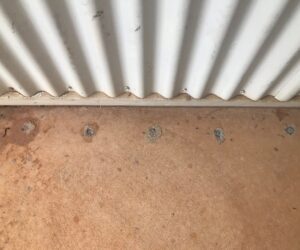Over the years, our Action Plans have continued to support patient accessibility and safety, in addition to investment in clinical equipment and unified technology communication infrastructure; significantly increasing remote accessibility within communities. An adherence to the Plan-Do-Check-Act (PDCA) cycle and the organisations delivery of multiple services locally provides OVAHS with invaluable insight and information relating to the infrastructure required to support a suite of services, including a primary health clinic (PHC), FASD program, Social Emotional Wellbeing (SEWB) programming and NDIS operations. This record and ongoing investment are ensuring our PHC delivers the best contemporary health care, to meet the changes and challenges of today and tomorrow.
With over 8,000 patients passing through the door and an expanding workforce, OVAHS is committed to ensuring the organisation can meet the needs of our community by investing in the upgrading, renovating and overall improvement of OVAHS infrastructure and staff housing
For the FY 20/21 Projects have completed:
Fire Stair way Admin Termite Barrier Installations


Bore water Systems Installations Reticulations Upgraded


OVAHS project improvements include and are not limited to:
IAHP SMP Minor funding $329,000:
- Air purifiers, CCTVs, security fencing extension, upgrading floorings, painting, kitchen, ceiling fans, security sensor lights, LED lights upgrade of interior and exterior, roof renovation apply to OVAHS complex building and staff housing
AHP Capital funding $9millions:
- Expansion of carpark and program building to lease lot 3 & 4 via MG divestment at Nulleywah community
- Acquire 2 staff housing
- Upgrade IT of PCs, Laptops, and stationery accessories
Below is snapshot of how the organisation has allocated appropriate funding to support the infrastructure capacity of the organisation:

Sources: IAHP SMP Grant Activity Service Agreement
OVAHS continues to work towards:
- Adapt different models of care –The new NDIS buildings and fleet are very different, so the models of care have to be different. For instance, the building and vehicle mobility must be built and equipped with equal access to the physical environment, transportation and other facilities and services for people with disability
- GP and Program rooms to be expanded – reconfiguring existing buildings including the pharmacy room, expansion of GP rooms, carpark, new program building to provide seamless infrastructure now and into the future plan.
- Push for environmental sustainability – For all of our new buildings we do the most we can in terms of environmental sustainability, we are passionate about using materials that are environmentally friendly, utilization of renewable energy solar panels, energy efficient consumption electrical appliances, and bore water systems.
- Increased costs – Not only are the “building additional new buildings, clinic room expansions, increased workforce” but the “running costs continue to grow.” This means working with partners and stakeholders to develop new efficiencies so as to “push for environmental sustainability whilst the costs increase.”
- Promote a flexible environment – “We know we will use rooms and share differently because of temporary expansion; we adapt quickly moving in and out until we will build permanently in future.
In summary, we are well placed for the year ahead. The diversity of our workforce operations provides resilience, and our performance will benefit from our strong position in the detached PHC service delivery. In closing, I want to personally thank all the teams across Admin for their efforts this year managing the challenges of the Covid-19 pandemic whilst reorganising the business and delivering a great result for all Admin operations including our shareholders. I look forward to working with our teams in the year ahead to continue to create value for OVAHS.
Operations and Risk Manager
Cuong Chan Luu

